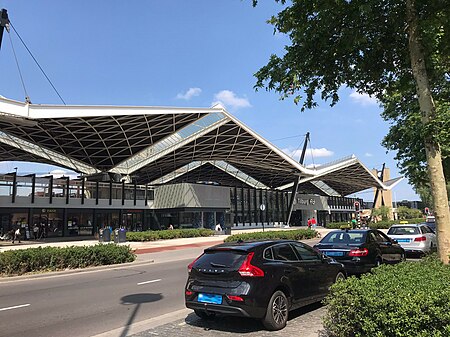Tilburg railway station
Railway stations in TilburgRailway stations in the Netherlands opened in the 1860sRailway stations on the Staatslijn ERailway stations opened in 1863

Tilburg railway station is a railway station located in Tilburg in the province of North Brabant, Netherlands. The station was opened on 5 October 1863 and is located on the Breda–Eindhoven railway and Tilburg–Nijmegen railway. The train services are operated by Nederlandse Spoorwegen (NS). North of this train station used to be the large Tilburg Works, where large scale work were carried out on locomotives. Since 2013 these works are carried out northeast of the city in a new industrial area, called Loven-Noord, along the Tilburg–Nijmegen railway.
Excerpt from the Wikipedia article Tilburg railway station (License: CC BY-SA 3.0, Authors, Images).Tilburg railway station
Burgemeester Stekelenburgplein, Tilburg Oud-Noord
Geographical coordinates (GPS) Address Nearby Places Show on map
Geographical coordinates (GPS)
| Latitude | Longitude |
|---|---|
| N 51.560555555556 ° | E 5.0827777777778 ° |
Address
Spoor 1
Burgemeester Stekelenburgplein
5038 CX Tilburg, Oud-Noord
North Brabant, Netherlands
Open on Google Maps











